To follow are the first part of June 2 1905 article of "Hwangseong Shinmun"(皇城新聞) , which seems to be the translation of 30th May, 1905 Japanese official gazette (官報 号外) about The Battle of Tsushima (Strait), commonly known as the Japan Naval Battle(日本海海戦) in Japan. This is the important historical primary resource which shows how Korean in 1905, the year Japan incorporated Takeshima/Liancourt Rocks into Shimane, actually called the island. All the documentations which shows how they called the island we found so far was Japanese resources, so it is the first time we confirmed Korean documents/evidence. And, it was Angohu島(island)=Liancourt Rocks which was same with Japanese, not Dokdo, Seokdo, Usando nor any other names Korean claim to be the old names for Takeshima/Liancourt Rocks afterall.
雑報 (Miscellaneous) (皇城新聞)
日艦隊의 公報 日本聯合艦隊司令官의 公報를 槪據한 則 聯合艦隊의大部隊가二十八日後에는 안고후島 附近에셔敗殘한俄國艦隊의 主力部隊를包圍攻擊하야 其降服을 受한 後에 追擊은 中止하고 此艦을 措處하는中이오
・・・・・・・・・・・・・・・・・・・・・・・・・・・・・・・・・・・・・・
The official dispatch of Japanese fleet. According to the general official dispatch of Japanese fleet, that is, A big unit of the Combined Fleet, after 28th, near the "Angohu(Yanko= Liancourt)" island, encircled and attacked the main force of defeated Russian fleet. And followed by the surrender of the enemy, they stopped the pursuing and in the middle of dealing with the ship...
The original Japanese Navy's war report was written under the name of famous Fleet Admiral Marquis Togo Heihachirou (東郷平八郎) and it was printed in official gazette(官報). Korean journalist mainly quoted article no.5 of the original. The original itself starts with the famous phrase "本日天気晴朗 ナレドモ浪高シ" written by Vice Admiral Akiyama Saneyuki (秋山真之). To follow is the part which coincides with the sentence above.
(官報原文 : Original - Official Gazette of Japan)
連合艦隊ノ大部ハ、前ニ電報シタル如ク、一昨二十八日午後、「リアンコルド」岩附近ニ於テ、敗残敵艦隊ノ主力ヲ包囲攻撃シテ、其降伏ヲ受ケ、追撃ヲ中止シ、之ガ處分ニ従事中、
・・・・・・・・・・・・・・・・・・・・・・・・・・・・・・・・・・・・・・
(As it was already transferred, the most of Combined Fleet had encircled and attacked the main force of remaining enemy ship corps defeated near at the Liancourt Rocks in the afternoon on 28th and after their surrender, it stopped the pursuing and now engaging the dealing with the aftermath. )
* Korean reporter mistranslated "大部" as "大部隊"
* Korean reporter mistranslated "二十八日午後" as "二十八日後"
* "リヤンコルド岩(Liancourt Rocks)" is translated as "안고후島" and altered "rocks" to "island" in Korean article.
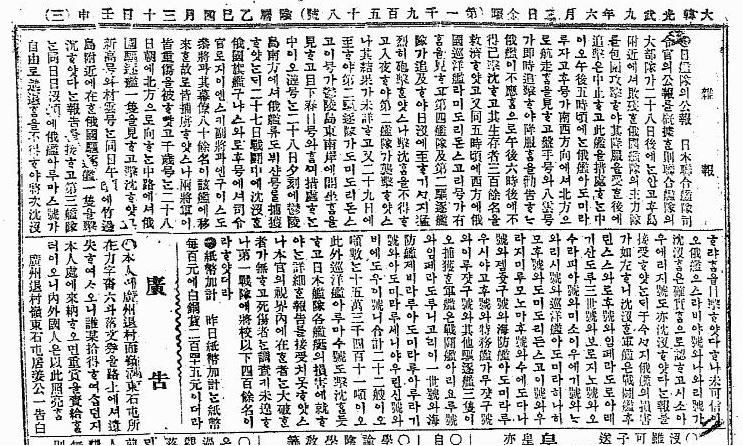
Korean reporter seems to have translated article no.5 of Japanese Navy report basically, but actually, if you read the whole article, you will notice that he/she edited the original and had put more information they got from somewhere else since some parts of them were not in the original Japanese naval report. In other words, although writer did translated the Japanese report, he/she had collected more information and re-organized this article in his/her own perspective.
Interestingly and importantly, the writer of this article used "안고후(Angohu)島(island)", which was common name of the Takeshima/Liancourt Rocks (ヤンコ島 : Yanko-to)by Japanese and used by Korean as well around early 1900s, instead of "안고후(Angohu)岩(Rock)", the direct translation of the "リアンコルド(Liancourt)岩(Rock)" in the original Japanese war report. In other words, the writer changed the name of the island into the name it commonly known by. It is the concrete evidence that the writer of the article actually identified the island in concern is Liancourt Rocks(Yanko-to(ヤンコ島)), not only copied the name of the island, and also he/she knew that the island played the important role in the battle of the Tsushima.
Moreover, the reporter wrote Liancourt Rocks as "안고후島", which is the Korean pronunciation of "Liancourt Rocks", not "Dokdo(独島)", "Seokdo(石島)" nor "Usando(于山島)", all of which Korean claim as the other names of Takeshima/Liancourt Rocks. Japanese started to call Takeshima/Liancourt Rocks, which they used to call "Matsushima(松島)" in Edo era, as "Yanko(Liancourt)" island after Meiji restoration in 1867 when they got to know that the western name of the island on the map. And it is known that Korean, in 1904 warship Niitaka report, had wrote the island "Yanko-to/안고후島"(Liancourt Rocks) as "独島(Dokdo)". This 1905 article is important Korean own evidence that Korean still called Takeshima Liancourt Rocks as "Angohu-island", just like Japanese called Yanko-to.
And lastly, in Admiral Togo's original report, notice that he/Navy officers still used "リアンコルド岩(Liancourt Rocks)" instead of "竹島(Takeshima)" which they had already officially incorporated into Japanese territory and renamed as it is four months ago. Apparently, for Japanese officials, Navy, especially Admiral Togo and his brains had not placed much importance on incorporation of Takeshima from the strategical point of view. This implies Navy Captain / A chief of Hydrograhical Department, Kimotsuki Kaneyuki(肝付兼行) had no intention of "secretly" incorporating the island when he advised Japanese fishermen that the island had not been occupied by any other countries and it should be Japanese territory, in September 1904, unlike Mr. Naito Seichu and Prof. Hosaka keep claiming falsely without any concrete evidence.
These points confirm the fact that Korean in 1905 didn't consider Yanko-to/Liancourt Rocks/Takeshima/Dokdo as their own territorial island. And it also excludes the Korea's illogical claim that Japanese incorporation in 1905 was done secretly for the purpose of the accomplishment of Russo-Japan war. In fact, Japanese Navy started to construct watchtower on Takeshima/Liancourt Rocks in July and they started to use it in August, not before, but "after the Japan-Russo War.
During those days in 1903-1905, there were absolutely no newspaper article, official reports, requests, inquiry nor claims which object Japanese (Navy/civilian) activities on Takeshma/Lincourt Rocks from Korean at any level, including this article, which called "Angohu島", not Dokdo. It was not until Shim, the head of Ulleungdo mistook "Dokdo" as their territory, probably mysterious "Usando" which is believed to be 100-ris(40km) away from Ulleungdo, and reported the incident to his boss in mainland, which lead Korean central government require the survey of "the geography and population" of the island. This happened after he was told that Takeshima was now Japanese island, by the delegate group of Shimane prefecture who visited to Ulleungdo in 1906. If Takeshima/Dokdo had been truly their "inherent territory" and had "effective control" over the island in/before 1905 as Korean government currently claim, why they didn't even notice/claim about those open and spectacular war activities on /around Takeshima/Angohu島 by Japanese Navy, like they did about on Ulleugndo? In addition, civilian fishermen including Nakai built the huts and were hunting salions at least from 1903 and Korean definitely knew about Japanese economical activities. But still, there is absolutely no trace that Korean set any claim on them. Why?
I think it was simply because Korean, especially government officials in Seoul had no accurate nor precise information about Takeshima/Liancourt Rocks at all in the first place and didn't consider over Ulleugdo as Korean territory and thought Jukdo, the modern name of Usando, for the eastern limit of Korea, excluding this "Angohu Island/Liancourt Rocks/Yanko-to" from their territory in 1905. In 1882, Lee Gyu-won used the same name "竹島" with Japanese for Jukdo after Japanese MOFA identified Jukdo as 竹島(竹嶼) in 1881 based on Navy's survey. Although Korean had no accurate information on the whereabouts of Japanese Matsushima, they had simply swallowed the phrase "Usando is Japanese Matsushima",the lie Ahn Yong-bok started in 1696, and kept recording the phrase in the documents. Making the issue complicated, for Korean, Usan(Usanguk/Usando) was the name of Ulleungdo in ancient times. Moreover, Choson people hadn't visited Ulleungdo often since it was prohibited by the dynasty and the voyage was extremely dangerous for them, so they were not perfectly sure about the location of Ulleungdo and Usando and if those islands are two islands or one island with two names until 1711, when Bak Chang-seok's (朴昌錫) inspected Ulleungdo and labelled Jukdo as so-called Usando (鬱陵島圖形). After 1711, in most cases, Ulleungdo started to be recognised as it is today and Usando had been depicted as the neighbouring island of Jukdo(竹島 : Japanes pronunciation = Takeshima), but the Ahn's false calim still kept cited without any doubt in the documents. When they noticed that new Takeshima/Liancourt Rocks was old Matsushima in 1906, which they believed to be Usando, they again started to get confused as if Takeshima(Liancourt Rocks/old Matsushima) was Usando, which was the Korean name for Jukdo. However, in July that year, Korean Ministry of Interior officially answered Takeshima/Liancourt Rocks/Dokdo is outside of Uldo(Ulleungdo) County to the Japanese Resident-General . It is apparent that Korean had no recognition of Takeshima/Liancourt Rocks as their territory until 1950s. I believe Korean government are making use of this chain of misunderstandings and the confusion of names/locations of the islands which Korean had long held from ancient times.
In conclusion, from this article and the original Japanese Navy report, we are safely to conclude that Korean in 1905 did not have even slightest idea/recognition that Liancourt Rocks(Takeshima) was their territory. And the Korean claim that Japanese Navy secretly incorporated the island into Shimane for the purpose of the war is nothing but just a groundless accusation.
The basic idea of this post, writing of Japanese report and Korean article, Japanese translation of Korean article and the detailed analysis of whole report/article, all of them were done by our frequent commentator matsu. Though matsu translated and analysed whole article/report, I have to confess that I couldn't translate all of it. And the article itself was introduced by another commentator GTOMR. Thanks, guys !!
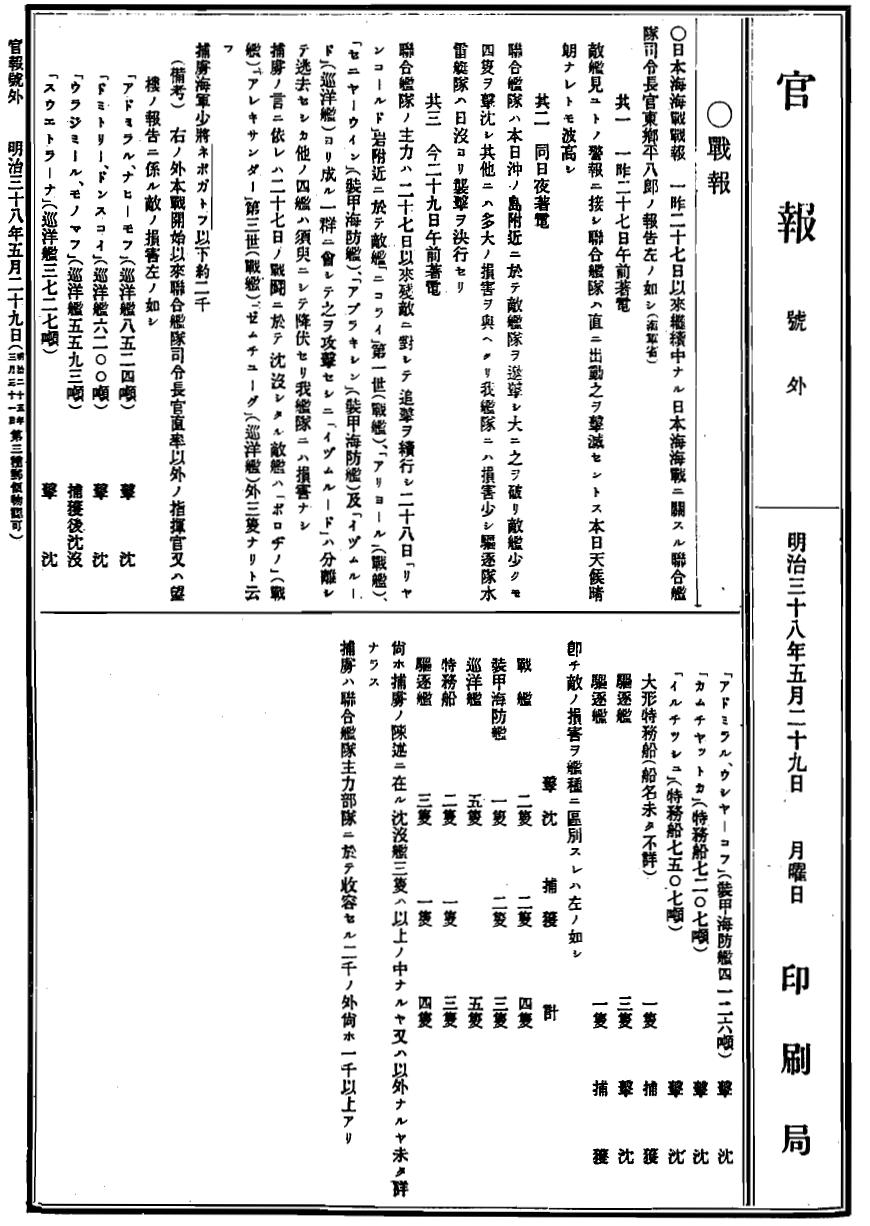
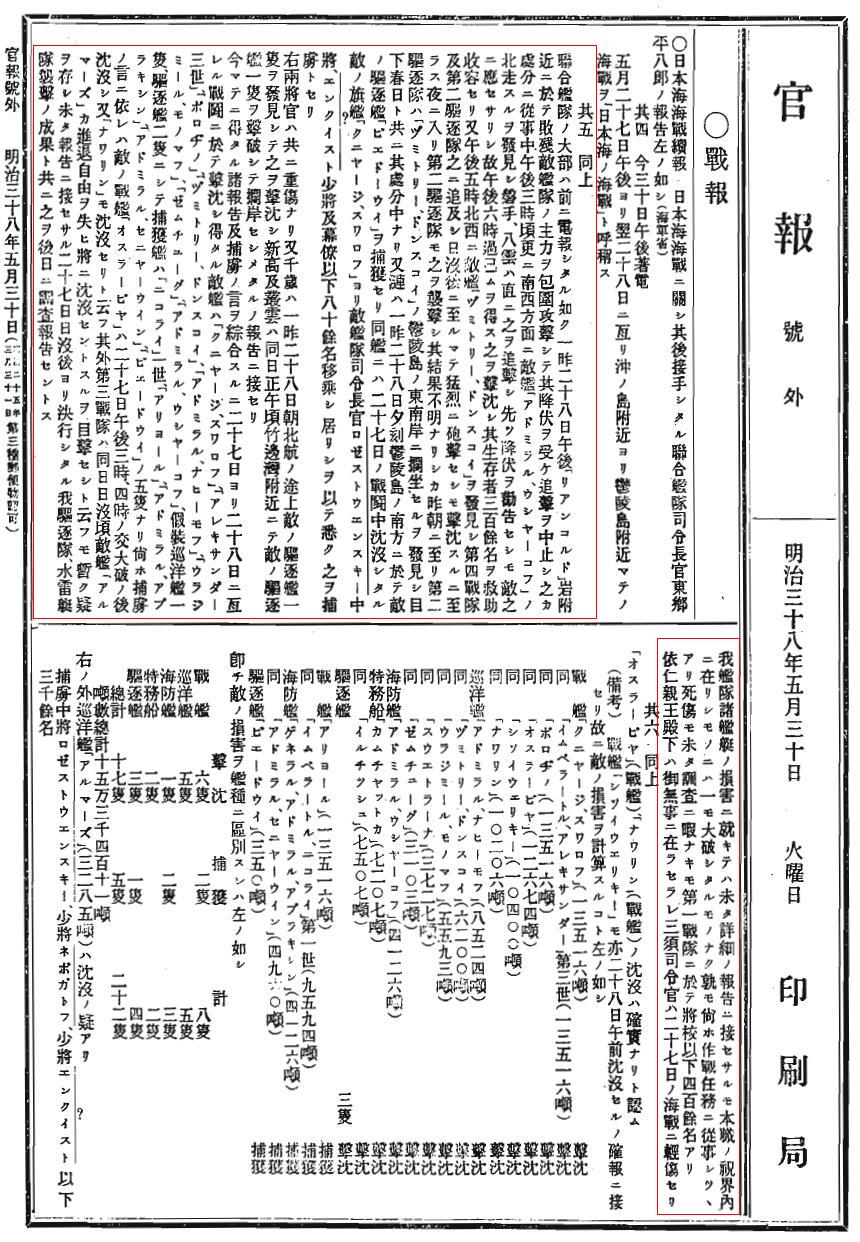

Reference :
1656 - "Yojiji (輿地志)" by Ryu Hyung-won (柳馨遠) didn't say "Usan is so-called Japanese Matsushima."1692-1693 -
The 1692 and 1693 incidents: Ahn Yong-bok's(安龍福) first visit to Japan1693-1696 - The Takeshima incident(竹島一件): the 1st dispute between Japan and Korea
1696 - Ahn's so-called Matsushima/Usando was Jukdo, afterall. (元禄九丙子年朝鮮舟着岸一巻之覚書 肅宗実録 30卷, 22年 戊寅)1711 - Bak Chang-seok's (朴昌錫) Map of Ulleungdo (鬱陵島圖形)
1774 - Chungwanji (春官志): "Ulleungdo is called Sambongdo (三峯島)" (
"盖 是島 以其産竹也 故 謂 竹島 以有三峯也 故謂 三峯島 至於 于山 羽陵 蔚陵 武陵 礒竹 皆音 轉 訛而然 也" )
1881 - Kitazawa Masanari(北澤正誠), a official of MOFA concluded that "Takeshima" is Jukdo in "A Study of Takeshima (Takeshima Kosho 竹島考証) "Lies, Half-truths, and Dokdo Video, Part 5 : "The King, Lee Gyu-won & Many Names for a Neighboring Island"
Korean Eastern limits described in various books exclude Takeshima/Dokdo from KoreanTerritory1905 - January 28th: the decision to incorporate Takeshima in to Shimane by a Cabinet meeting (
公文類集第29編 竹島編入閣議決定)












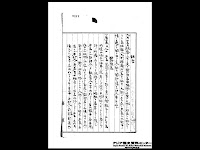







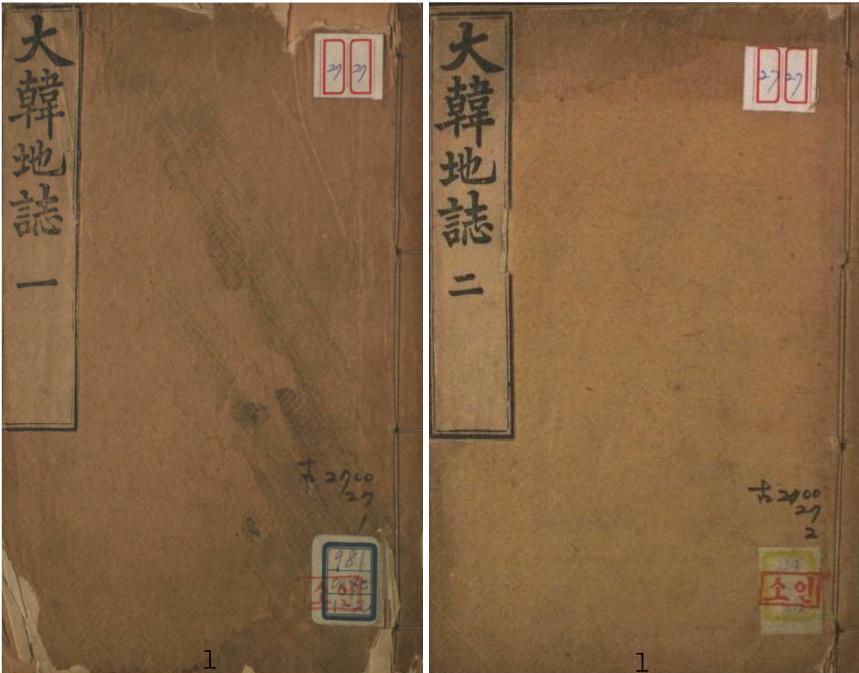

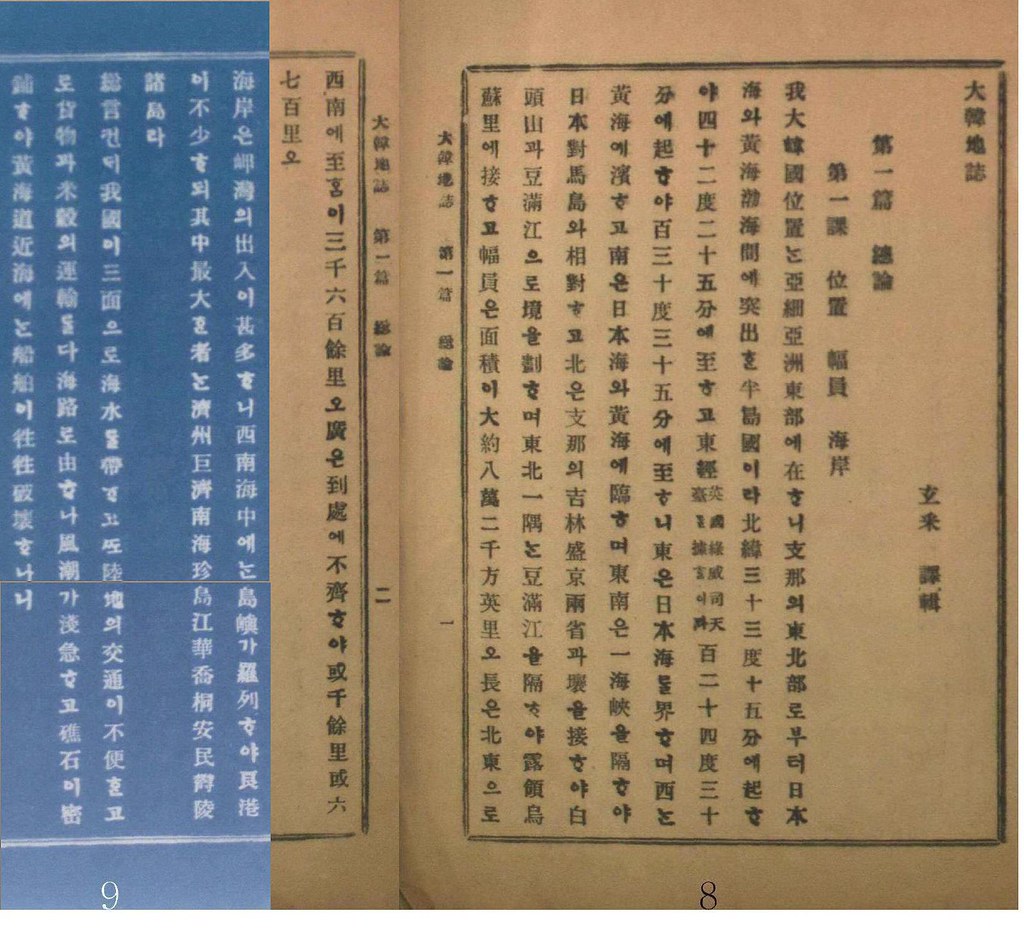

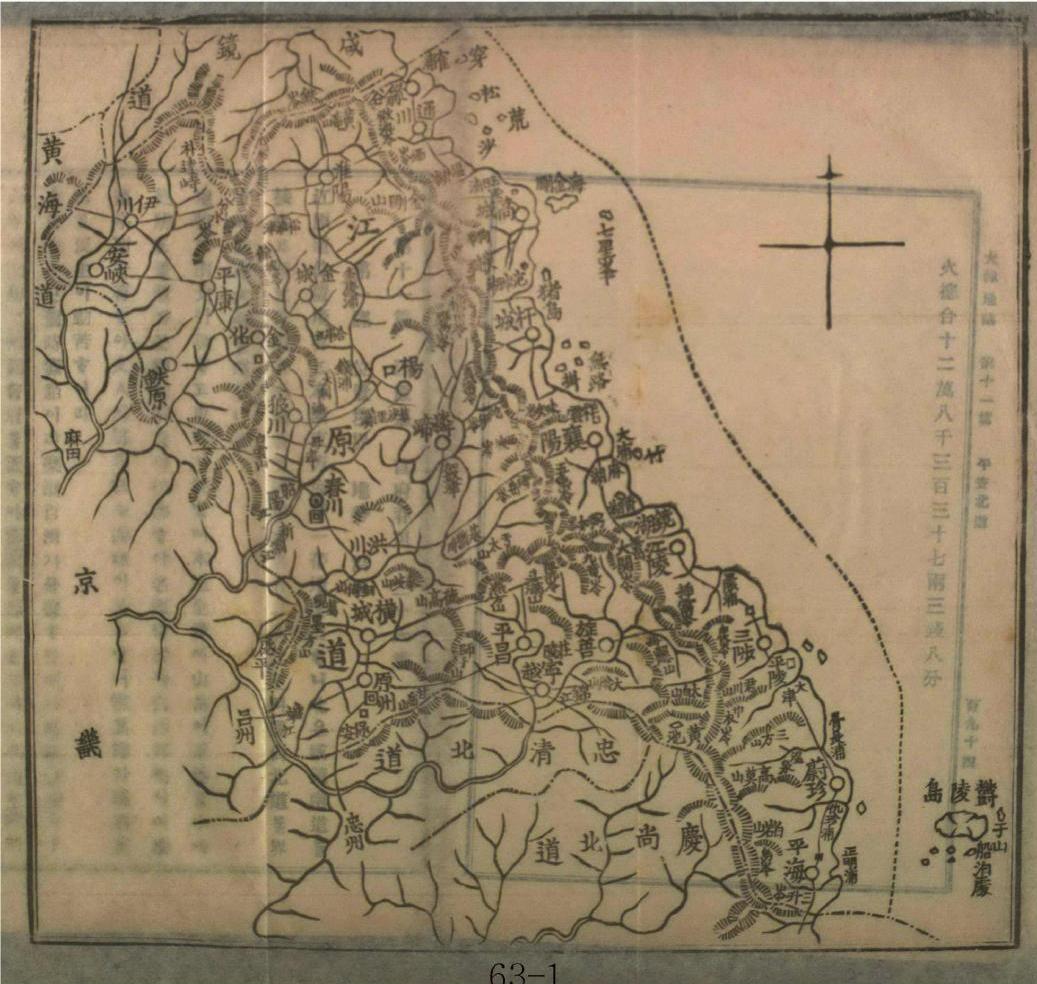









報告
九月二十五日、視察ノ命ヲ受ケ、鬱陵島南陽洞ニ上陸ス。同地ニハ、組長トモ称スベキモノハ、島根県人天野源蔵外一名アリ。就中、天野ハ五年前ニ来島シ、内部ノ事情ニ通ズト聞ク。由テ同人ニ就キ聞知シ得タル處、大要左ノ如シ。
鬱陵島
一 広襄及人口 本島ハ周囲一三里アリト称スト難ドモ、実際較之ヨリ小ニシテ、島内峻山屹立シ、海岸ハ陡岸ニシテ、殆ンド平地ト称スベキモノナク、處處ニ少許ノ砂浜ノ存スルアリテ、波穏ナルトキハ、端艇ヲ着岸スルコトヲ得ベシ。
本島ニアル朝鮮人ハ、戸数五百、人口二千内外アリト難ドモ、彼等ハ各其開墾セル畑地ノ附近ニ住スルヲ以テ、家屋ハ谷間、若シクハ山腹ニ於テ、各所ニ散在シ、其中、較較、村落ノ形ヲナスモノ、八個アリ。而シテ、現今本島ニ在留スル本邦人ハ、老若男女相合シテ百名内外ニシテ、本年五六月頃マデハ、百五十名内外アリシト云フ。是等ノ本邦人ハ、前記ノ部落内ニ割居ス。其名称人数等、大約左ノ如シ。
村落名称 位置 戸数 人数
南陽洞 南部 四 七
通亀尾 同 三 九
東洞 東部 一五 三十
茂洞 同 二 三
竹岩 北部 一 三
錐山 同 一 四
玄浦 同 一(大ナルモノ) 二十
昌洞 西部 二 八
二 気候及風土
本島ハ、寒暑共ニ酷烈ナラズ。毎年、四月ヨリ九月マデ偏南風多ク、十月ヨリ三月マデ偏北風多ク、殊ニ十一月頃ハ北西風強ク、降雪ハ十月下旬ヨリ三月下旬ニ至リ、山上ニハ五月尚ホ、積雪ノ存スルアリト。
土地、極メテ健康ニシテ、天然痘ノ外、疫病等ノアリシコトナシ。彼ラハ之ヲ水質ノ良好ナルニ帰スト云フ。
三 産出物
朝鮮人ハ専ラ農ヲ業トシ、大豆ヲ主トシ、麦・粟・稗・馬鈴薯等、之ニ次グ。而シテ大豆ノ収穫ハ、毎年平均三四千石アリト云フ。他ノ穀類ハ、彼ラノ常食トスル所ニシテ、平年ニアリテハ、不足ヲ告グルコトナク、又、或ル村落ニアリテハ、二隻乃至数隻ノ小舟ヲ有シ、僅少ノ漁猟ヲナスモノアリト云フ。島内、殆ンド鳥獣ノ棲息スルナク、稀ニ山猫、鳩等ヲ見ルニ過ギズト云フ。
四 糧食及清水
糧食ハ、各村落、至ル處、只少量ノ鶏、及鶏卵ヲ得ベク、其価、亦廉ナリ。
淡水ハ、各所ニ河流ノ存スルアリ。水質善良ニシテ、旱魃ノ患ナシト云フ。現ニ、南陽洞ニ於テモ一清流アリ。且、清泉ノ湧出スルヲ見タリ。
五 島監 ハ、即チ島司ニシテ、裵季周ナルモノ其職ヲ奉ジ、本島ヲ管轄ス。現今、東洞ニ住ス。同人ハ昨年五月、本邦ニ至リ、敦賀・松江等ヲ巡視シ、本年五月帰任セリ。
裵季周ハ、四年前、島監トナリタルモノニシテ、性質温良、少シク日本語ヲ解ス。以前ハ茂洞ノ人、島監タリシモ、或ル事情ノ為メ人民ヨリ悪ミヲ受ケ、遂ニ殴殺セラレタリト云フ。
六 交通 近来、軍船ノ来リシコトナク、又、汽船ノ便ナク、朝鮮船ハ、時々、竹辺附近ヨリ来往スルコトアリ。
本邦人ハ、各組ニ百石乃至二百石積ノ和船ヲ有シ、多キ時ハ、一ケ年ニ三回ノ往復ヲナスコトアリ。大抵、春時ハ三月頃来リ、直チニコレヲ陸揚ナシ置キ、五月頃出帆シ、八月頃来リ、九月頃出帆スルヲ常トスト。
七 本邦人ノ来歴 本島ニ現住スル本邦人ハ、多クハ昨年三月以降、渡来シタルモノニシテ、四五年間本島ニ在留セルモノ、極メテ僅少ナリ。而シテ彼等ハ、元ト船乗ヲ業トセルモノニアラザレバ、一攫千金の●利ヲ博サントスルノ投機者輩ヲ多シトス。而シテ島根県人最モ多く、間々、鳥取、若クハ、大分附近ヨリ来ルモノアリ。
八 本邦人ノ生活 彼等の家屋、納屋ノ如キモノニシテ、糧食品ノ主ナルモノハ、和船ニヨリテ輸入ルモノニシテ、平時ハ不足ヲ感ズルコトナキモ、海上不穏等ノ為メ、和船ノ沈没等アリシ為メ、大ニ欠乏ニ苦シミタルコトアリト云フ。而シテ、是等和船ハ、大抵、伯耆堺、石見国濱田ヨ
リ来ルモノニシテ、果シテ密輸出ヲナスモノタルヤ、或ハ他ニ目的地ヲ詐リ、輸出シ来ルモノタルヤ、知ル能ハズ。
九 本邦人ノ職業 島内ノ樹木ヲ採伐シ、和船ニヨリテ之ヲ本邦ニ輸出シ、其多クハ、敦賀・博多・馬関等ニ之ヲ揚陸ス。其樹木ハ、槻及松ノミニシテ、槻ハ現今、其最大ナルモノ長サ七尺、巾三尺、厚七八寸ナルモノアリ。勿論之等ハ海岸ニ於テ得ル能ハズ。松ハ朝鮮人ニ販売スルモノノミニシテ、雑用ニ供スト云フ。
大豆ヲ買収シ、之ヲ本邦ニ輸出ス。蓋シ、本島産出額ノ大半ハ、本邦人ノ手ヲ経過スルモノナリ。
黐樹ヨリ黐ヲ製造ス。現ニ南陽洞ニアリテモ、之を製造シアルヲ見タリ。而シテ、此樹木ハ、已ニ採伐ヲ尽シ、今後之ヲ製造シ得ル見込ナシト云フ。
雑貨・金巾・麻布等を朝鮮人ニ販売ス。
以上ノ職業ニ関シ、彼等ハ曰ク、初メ朝鮮人ハ濫ニ樹木ヲ焼キ、畑地ヲ作ルヲ常トス。故ニ本邦人ハ、徒ラニ是等ノ樹木ヲ焼却センヨリ、之ヲ採伐スルノ利アルヲ説キ、朝鮮人ト共謀シテ、之ニ着手シタルモノナルモ、後、遂ニ乱伐ヲ企ツルニ至リタルナリ。而シテ、現今ハ、本邦人、島監ト協議シ、樹木ヲ採伐シ大豆ヲ買収スル等、皆、見積利益金ノ百分ノ二ヲ税金トシテ前納シ(昨年迄ハ百分ノ五ナリシト云フ)、之ヲ行フト。又、本邦人ト朝鮮人トノ間ハ、近来、絶テ争闘等ノコトナク、極メテ円滑ナリ。又、彼等ハ、雑貨、其他、米等ヲ得ルノ便アルヲ以テ、本邦人ノ在留スルヲ喜ブ如シト。
本邦人間ノ関係ハ、数多ノ組ニ分レ、各組ニ組長ヲ有ス。各組長ハ、互ニ連絡シテ規約ヲ設ケ、以テ競争・軋轢ノ弊ヲ防ギ、之亦、円滑ナリト。